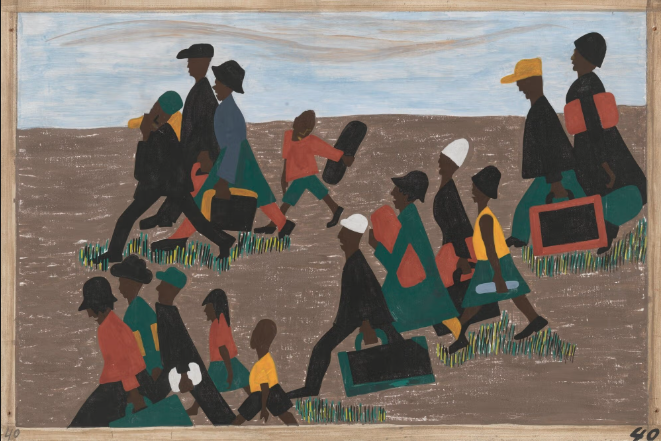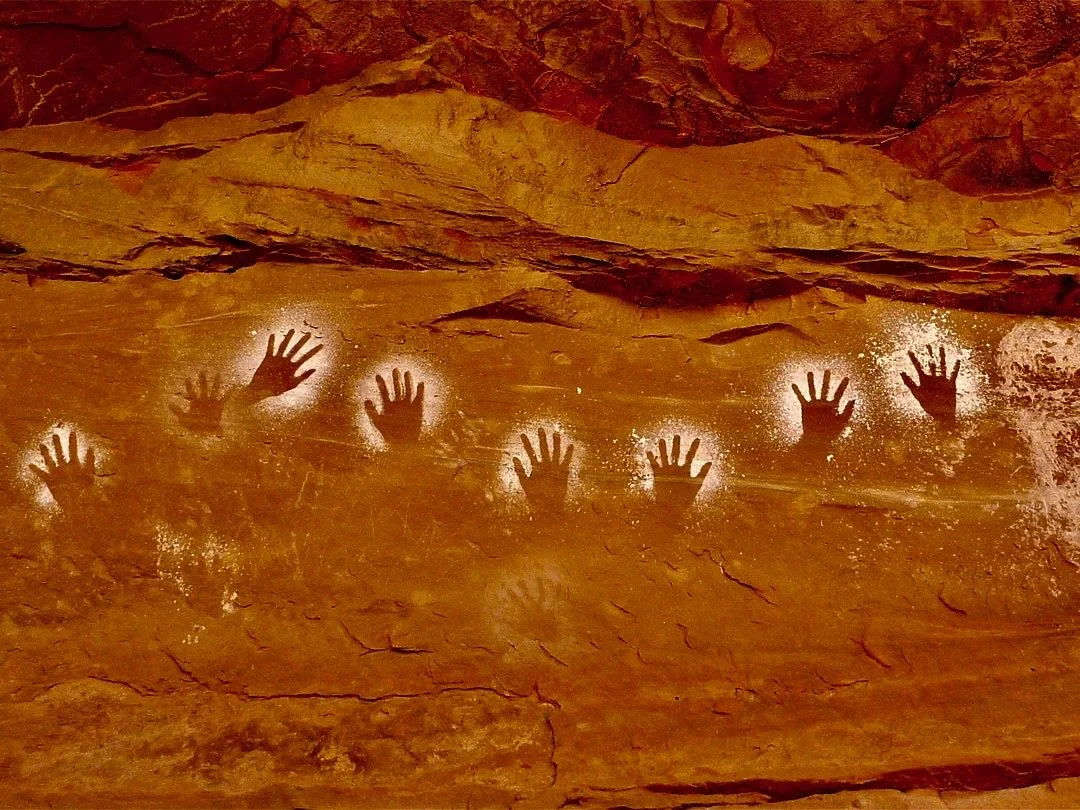NOTICINGS: Contrast & Compare the Grievances — 1776 to 2025
What has remained constant?
Anasazi Petroglyphs - Cedar Mesa, Utah. Source: americasouthwest.netWho knew then and now mirror one another? I did not.
Which then? 1776.
Which now? 2025.
Why am I listening to professors Jill Lepore and Joanne Freeman? Because I need perspective from the anguish and suffering and deliberate cruelty being inflicted on nearly everyone by our government.
“We must disenthrall ourselves, and then we shall save our country.” —Abraham Lincoln, 1862
My purpose here is to take heart from the deep uncertainties experienced by the colonists and their representatives, whom we know as The Founders.
“We’re in a wilderness without a single footstep to guide us,” admitted James Madison.
“I walk on untrodden ground,” muttered George Washington.
“The whole world is a shell and we tread on hollow ground every step,” wrote Senator William Maclay in his diary, providing a rare account of Senate floor activity during the first three sessions of Congress.
It was complicated at the Founding of these United States, as is our political situation today. Most people were then deeply attached to the King, to their families, and their friends in England. Changing their minds would be like a MAGA person changing his or her mind today. No precedent existed for such a radical separation from their “father,” the King.
Today, unelected administrators control funds already approved by Congress. They have destabilized public schools, scientists, universities, health providers, patients, and insurers. Masked police round up people determined by their color, a recent decision by the SCOTUS 6. Lawlessness rules.
When Thomas Jefferson brought his draft of the Declaration of Independence to the Continental Congress, fierce debate was whether to revolt or not to revolt. Either way, their actions were treason. Benjamin Franklin’s famous quip captures it: “We must all hang together, or assuredly we shall all hang separately.” Those loyal to England argued to try, once again, to create a reconciliation with the King, who, in fact, would not read their petitions. George Washington’s frequent dispatches to the Continental Congress about the state of his army underscored the visceral uncertainties of the situation that must, don’t you think, be similar to the people targeted by ICE today? Washington’s accounts of scarcity, sickness, and resolve did not bode well for the future of—call them what you will— Revolutionaries, Patriots, Reformers, and Rebels. His troops of “lads” of 15 and old men were under-armed, sick, and scattered.
If I contrast and compare the 17 grievances against King George III charged in the Declaration of Independence and the actions of today’s president, does the Declaration of Independence suggest an extraordinary precedent for our response to the actions of the President?
When Jefferson’s draft went to the Congress for editing, his condemnation of slavery was a deal-breaker; the South would walk out if the contested paragraph remained.
In the 1972 movie, 1776, a conversation about that damming paragraph between Thomas Jefferson and John Dickinson (Emily’s father):
JD: Why do you refer to King George as a tyrant?
TJ: Because he is a tyrant.
JD: I remind you Mr. Jefferson, that this tyrant it still your King.
TJ: When a king becomes a tyrant, he thereby breaks the contract binding his subjects to him.
JD: How so?
TJ: By taking away their rights.
JD: Rights that came from him in the first place?
TJ: All except one. The right to be free comes from nature.
JD: And are we not free, Mr. Jefferson?
TJ: Homes entered without warrant.
Citizens arrested without charge.
And in many places, free assembly denied.
JD: No one approves of such things, but these are dangerous times.
BF: Be careful, Mr. Dickinson. Those who would give up some liberty in order to obtain temporary safety, deserve neither liberty nor safety.
The South won the fight. To preserve unity among the colonies and get the required unanimous consent, the moral principle was sacrificed.
People persevered. The sidelined citizens of color, white men who did not own property, and all women persisted. Eventually, Black Americans gained the right to vote in 1870, but were systematically denied their vote until the 1965 Voting Rights Act. Native Americans were granted U.S. citizenship and the right to vote in 1924, but many states continued to block them from casting ballots for decades afterward. White women gained the right to vote in 1920, but many Black women were still prevented from voting due to state-level voter suppression tactics until 1965. The beat goes on; gerrymandering, and the upcoming SCOTUS decision about Section 2.
To this day, the history of Black Americans who advocated for suffrage and legal protections, and created a collective Black political voice and national strategies to combat racial hostility at Colored Conventions, is left out of the popular narrative. SCOTUS decisions claiming originalism fail to include their monumental work. A beacon for continuing perseverance is to hold tightly to the declaration: All men are created equal.
Source: Jacob Lawrence, Migration series, 1940-41. The greatest migration in American history in which African Americans left the Jim Crow South seeking freedom and an escape from vigilante terrorism.People persevered. Despite forced relocation, starvation, and Indian schools whose mission was to turn native children into white people. Indian schools; cemeteries mark the experience of kidnapped children. Native Americans who continue to choose to remain Native.
Source: Jason Bean/USA Today NetworkI am convinced that hope was the energy that made the impossible possible then. Hope took focus, intention, and action past the finish line.
Hope is what we need today as we face the tremendous, brutal forces of this government. I appreciate what Ketanji Jackson Brown’s mother told her as she was growing up: “Guard your spirit, Ketanji. To dwell on the unfairness of life is to be devoured by it. Just shine.”
We can benefit from the hope that carried all those folks in 1776, those who signed the founding documents and those who did not. They all persevered against impossible odds faced by General Washington’s 5,000 troops to stand against an army of 25,000.
Looking at the contrast between 1776 and 2025, and, despite all odds, the perseverance of hope from those first years and every single year since, to this moment, gives perspective on the power of hope.
We persevere. Hope is what each of us is born with; it is our core self, untouched by trauma. Sometimes, and way too often, that aspect of being cannot rise through the layers of anguish and suffering, and deliberate cruelty. But when it can, somehow and in some way get through, it brings possibility to life’s journey. When partnered with focus and action, sometimes people get what the people want.
Notes:
the declaration of independence pdf
1776 (1972) ORIGINAL TRAILER [HD 1080p]
Politics Chat, October 2, 2025
DeVane Lecture, Class 3 – Declaring Independence
DeVane Lecture, Class 6 – Republican Precedents and Presidents: The Placement of Power
How to Confront and Defeat an Authoritarian with Heather Cox Richardson













